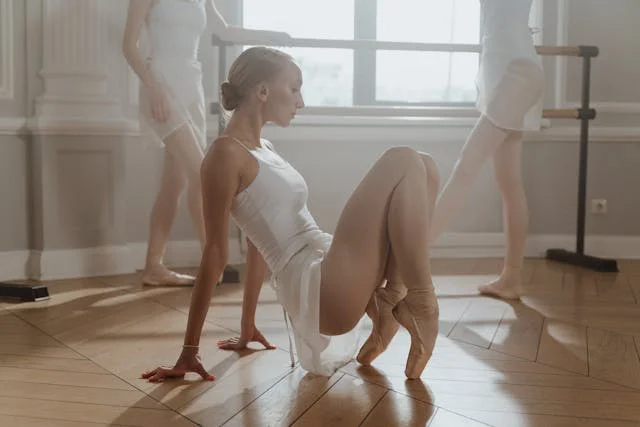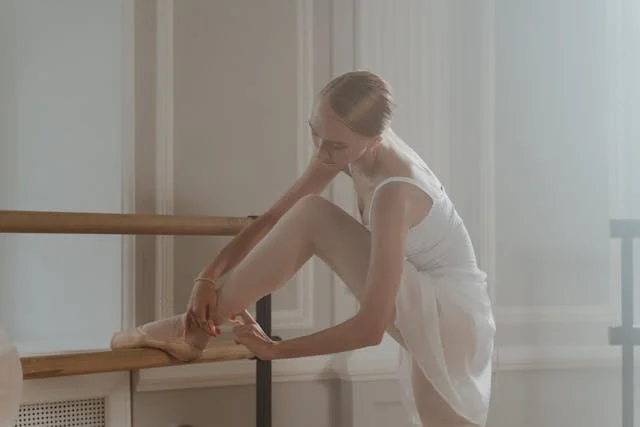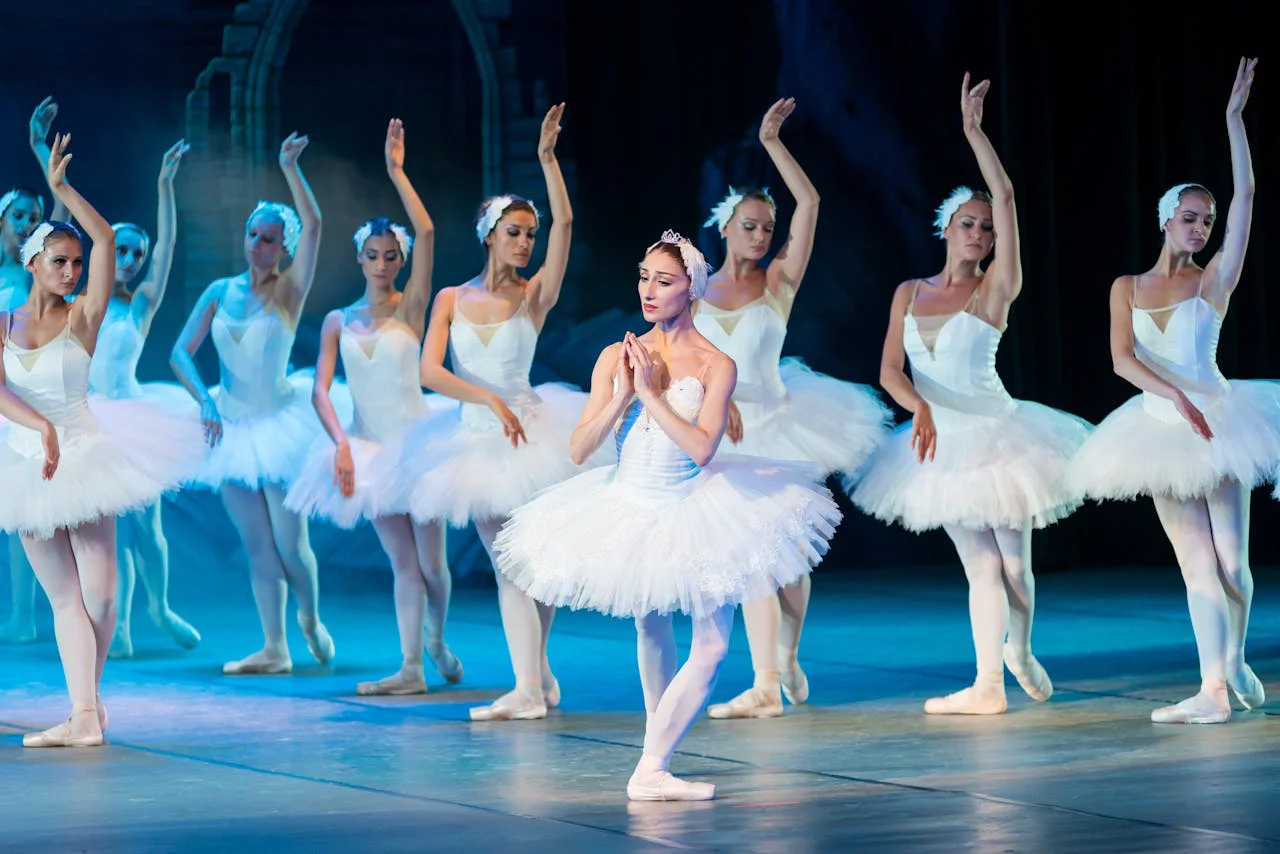What is a Ballet School?
A ballet school is a structured educational environment for teaching the art of ballet. Ballet is a type of dance that requires aesthetics, grace and high technical skills. Ballet schools offer courses for students of all ages, but ballet training usually begins at a very early age. The aim of ballet schools is to contribute to the physical and artistic development of students by teaching them ballet steps, choreography, musicality and stage arts. Students learn to work in a disciplined manner in ballet schools, which allows them to be regular and disciplined individuals in their lives outside of ballet.
Students who receive training in ballet schools learn not only ballet technique, but also the philosophy, aesthetics and dramatic expressive power of art. Discipline and continuity are the basis of education. Ballet school lays the foundations for a student to progress professionally in this art form.
The Importance of Ballet Education
Ballet education increases the dancer's physical coordination, flexibility and endurance. It also develops students' aesthetic understanding, increases their ability to move in harmony with music and combines emotional expression with physical movement. Therefore, ballet education is not only a dance education, but also a mental and artistic development process.
Types of Ballet
Different types in the ballet world have been shaped according to their technical and aesthetic understandings. Here are the main types of ballet:What to Consider When Choosing a Ballet School?

1. Experience and Expertise of Instructors

2. School Curriculum and Curriculum
3. Class Size:
Class size is important for the student to have one-on-one interaction with the instructor. Small classes allow the instructor to spend more time with each student and provide individual feedback.
4. Physical Conditions and Equipment:
Ballet halls should be spacious, well-ventilated, mirrored, and specially designed for dancing. In particular, the barres and floors used for ballet should be suitable for the safety of the students. Wooden or springy floors reduce the risk of injury to the students.
5. Age Groups and Levels:
The ballet school should offer classes for all age groups and levels. It is important to have a suitable training program for both beginners and advanced dancers. Classes divided according to age and level groups help the student progress at his/her own pace.
6. Performance Opportunities:
It is important for a student who is taking ballet training to gain stage experience. It is useful to check whether the school organizes shows throughout the year and whether students have the chance to perform. Performance experience increases students' self-confidence and allows them to step into the world of dance.
7. Development and Achievements of Students:
Another factor to consider is the success and opportunities of the students that the school graduates. Successful ballet schools can enable their graduates to take important positions in the national and international dance world.
8. Philosophy and Approach of the School:
The educational approach of ballet schools may vary. The school should give importance to the mental and emotional development of the students as well as their physical development. Many schools encourage discipline while also making sure that the student does not lose their love and motivation for ballet.
9. Fee and Ease of Transportation:
The fee policies of ballet schools can vary greatly. Check if the tuition fee fits your budget. Also, the location of the school and ease of transportation are criteria to consider.
Choosing a ballet school by considering these factors will help the student develop both physically and artistically in the long run.
The Education Process in Ballet Schools
1. Basic Ballet Training (Beginner Level)
Bar Work: Students work on balance and muscle control using the barre. Basic postures and positions are learned.
Flexibility and Posture: Students' body flexibility is worked on, and correct posture and stance are gained.
Basic Movements: Basic ballet movements such as plié, tendu, relevé are taught.
2. Technical Development (Intermediate Level)
More Complex Movements: More advanced movements such as pirouettes, jumps and turns are taught.
Coordination and Musicality: The harmony of movements with music is emphasized. Students learn to synchronize movements with music.
Bar and Middle Work: Classes begin with bar exercises and continue with movements that require balance and control in the middle of the bar.
3. Pointe Training
Requirements for Pointe Training: The student's body posture and technical control must be at a sufficient level.
Pointe Technique: Students work on standing on their toes, maintaining balance and moving properly.
4. Performance Preparations
Choreography Studies: Students develop their group work and individual performance skills by learning choreography.
Costume and Stage Rehearsals: Students experience a real performance by attending stage rehearsals.
5. Advanced and Professional Education
Advanced Technical Studies: Focus on complex combinations, faster and more challenging movements.
Repertoire Studies: Work on selected pieces from the classical ballet repertoire. Students learn the choreography of professional ballet pieces.
Preparation for Professional Ballet Companies: Students receive training for a professional ballet career and participate in various ballet festivals, competitions or auditions to develop their skills.
6. Ballet Theory and History
7. Body Health and Safety
8. Continuous Improvement and Evaluation
Benefits of Joining a Ballet School
Clothing and Equipment Required During Ballet Training
When receiving ballet training, certain basic materials are needed. These materials both allow the student to dance comfortably and provide an appearance suitable for the ballet discipline. Here are the basic materials used in ballet training:
1. Ballet Shoes:
Ballet shoes are one of the most basic materials in ballet training. They are specially designed to support the foot structure and facilitate correct movements.
- Soft Leather or Cloth Shoes: Beginner level students usually use shoes made of soft leather or cloth. These shoes provide flexibility and allow the feet to move more comfortably.
- Pointe Shoes: Dancers receiving advanced training prefer pointe shoes, which are used especially when dancing on the tips of their toes. These shoes have a special structure to provide strong support at the tip of the foot.
2. Ballet Leotard:
Ballet leotards are worn during ballet training so that students' body lines can be seen correctly. Ballet leotards are very important for instructors to properly evaluate students' posture and movements.
- Different Colors and Models: Most ballet schools may have designated leotard colors for certain age groups or levels. However, black, white and pastel tones are generally preferred.
3. Ballet Tights:
Ballet tights make movements easier by tightly wrapping the legs. They are usually preferred in skin color, pink or white. Tights help the leg muscles look smooth and provide comfort during dancing.
4. Tutu:
Tutu is one of the clothes that has become the symbol of ballet. Tutus, especially worn in performances, are widely used in classical ballets. Tutus can be of different lengths and layers.
- Classic Tutu: It has a short and fluffy structure. It is usually used in classical ballet pieces.
- Romantic Tutu: It has a longer and softer structure. It is preferred in romantic ballets.
5. Ballet Skirt (Skirt):
Students can sometimes wear a thin skirt over the ballet leotard. These skirts are usually made of light and fluid fabrics and provide flexibility during movement. Short skirts above the knee are usually preferred during training.
6. Ballet Cardigan (Wrap or Ballet Sweater):
At the beginning of ballet classes, especially during warm-up movements, dancers can wear a light ballet cardigan to keep their bodies warm. These cardigans are usually made of soft and flexible fabrics and hug the body.
7. Warm-up Booties:
Some ballet students wear ballet tights to keep their feet warm before or during class. These special shoes can be worn over ballet shoes, especially in cold weather, to keep the feet warm.
8. Pointe Shoe Accessories:
Some accessories are also necessary for students who use pointe shoes.
- Toe Pads: Since pointe shoes put pressure on the toes, silicone or fabric supports are used to protect the toes.
- Elastic Bands and Ribbons: Pointe shoes provide ankle support by being tied with elastic bands and ribbons.
9. Hair Accessories:
It is important to tie your hair neatly and tightly in ballet classes and performances. Usually, hair is made into a bun and secured with hair clips, bobby pins and hairnets.
- Hairnet: Used to ensure that hair looks neat and stays in place.
- Hair Clips and Hairpins: Used to gather hair and keep the bun in place.
10. Ballet Bag:
Ballet students need a special ballet bag to carry all their equipment. These bags are usually designed to carry pointe shoes, spare clothes, a water bottle and other personal items.
11. Exercise and Warm-Up Materials:
Warm-up and stretching exercises are an important part of ballet trainingHere are some auxiliary materials used for this purpose:
- Stretch Bands: Used to strengthen muscles and increase flexibility.
- Pilates Balls: Useful for strengthening core muscles and doing balance exercises.
- Yoga Mat: Can be used during warm-up and cool-down exercises.
12. Performance Costumes:
Ballet students wear special costumes in shows and performances. These costumes are designed according to the theme and choreography of the performance. A different costume may be used for each performance.
Ballet equipment directly affects the dancer's performance and comfort. Choosing the right equipment will allow the student to move comfortably and get the most out of their training.
Career After Ballet Education
A career after ballet training offers talented dancers a wide range of opportunities. Ballet training provides a variety of career options not only in the performing arts but also in teaching, choreography and other artistic fields. Here are some of the career options after ballet training:
1. Professional Ballet Dancer:
The most well-known career path after ballet training is to become a professional ballet dancer. After years of disciplined study and technical development, students can find the opportunity to dance in national and international ballet companies.
- Ballet Companies: Dancers can join professional ballet companies and perform on stages all over the world. Some of the leading companies are international ballet companies such as the Paris Opera Ballet, the Bolshoi Ballet, the Royal Ballet, and the New York City Ballet.
- Solo Dancer: Accomplished dancers may be selected for principal roles and solo performances. These positions mean advancement in a ballet company and a more visible role.
2. Choreographer:
A person who studies ballet may pursue a career as a choreographer. Choreographers create movement combinations and dance moves for ballet performances. This role guides the dancers’ performances with an artistic vision.
- Original Works: Choreographers may create their own original works or re-arrange classical ballets.
- Theatres and Ballet Companies: A choreographer may produce works for theaters, dance companies or ballet festivals.
3. Ballet Instructor:
After ballet training, dancers may pursue careers as instructors. They can train the next generation of dancers by giving lessons in ballet schools, conservatories or independently.
- Ballet Schools: Ballet instructors contribute to the development of technical and artistic skills by giving lessons to various age groups and levels.
- Higher Education Institutions: Some instructors provide academic dance education in universities or conservatories.
4. Dance Theater and Musicals:
Dancers who receive ballet training can take roles not only in classical ballet, but also in musicals and dance theater. On stages such as Broadway and the West End, ballet dancers can also showcase their acting and singing skills.
- Musicals: Dancers with ballet techniques can take part in musical productions as dancers and actors.
- Dance Theatre: Ballet dancers can take on important roles in productions that combine modern dance, contemporary dance and theatre.
5. Modern and Contemporary Dance:
Ballet training also creates opportunities in the fields of modern and contemporary dance. The technical skills gained during ballet training provide a solid foundation for transitioning to these freer dance styles.
- Modern Dance Ensembles: Dancers who receive ballet training can take part in modern dance ensembles and perform in contemporary works.
- Independent Dance Projects: They can exhibit their art in different dimensions by participating in independent projects in the modern and contemporary dance scene.
6. Dance Therapy:
Another career option after ballet training can be dance therapy. Dance therapy is a field where dance and movement are used for therapeutic purposes, and people who have received ballet training can specialize in this field.
- Physical and Mental Health: Dance therapists use dance and movement to improve both the physical and mental health of patients.
- Private Clinics and Rehabilitation Centers: Dance therapists can work in hospitals, rehabilitation centers, and private clinics.
7. Dance Photography and Videography:
People who have received ballet training can take their interest in the world of dance to a different level and do dance photography or videography. Capturing ballet dancers’ performances and behind the scenes provides a stronger vision with technical and artistic knowledge in this field.
- Stage Photography: Photographing and documenting professional ballet performances.
- Dance Videography: Capture ballet companies’ performances on video and create promotional materials.
8. Production and Stage Management:
Individuals who study ballet may take on roles such as backstage production, stage management, or organization. These positions require a combination of technical and creative skills to stage ballet performances.
- Stage Manager: Organizes ballet performances to ensure they go on stage smoothly.
- Production Assistant: May assist with organizing shows, stage setups, and other technical processes.
9. Dance Writing and Criticism:
People who have ballet training and enjoy writing about dance can become dance writers or critics. They can create different career paths in the art world by writing articles that review and criticize dance performances.
- Dance Magazines and Websites: They can write reviews about ballet performances or publish articles on dance.
- Blogging: They can create their own dance blogs and share their experiences and thoughts.
10. Costume and Stage Design:
Costume and stage design in ballet productions are of great importance in terms of the aesthetics of ballet performances. People who have received ballet training can make a career in this field by working on ballet costumes or stage design.
- Costume Designer: Can design original costumes for ballet performances.
- Scenic Designer: Can design stage decorations and sets for shows.
11. Ballet Management and Artistic Management:
People who have received ballet training can also pursue careers in more administrative roles, such as managing ballet companies or acting as artistic directors.
- Artistic Director: Determines the overall artistic direction of ballet companies, managing the entire process from repertoire selection to the aesthetics of performances.
- Ballet School Director: Can pursue a career in ballet education by opening your own ballet school or becoming the director of an existing school.


